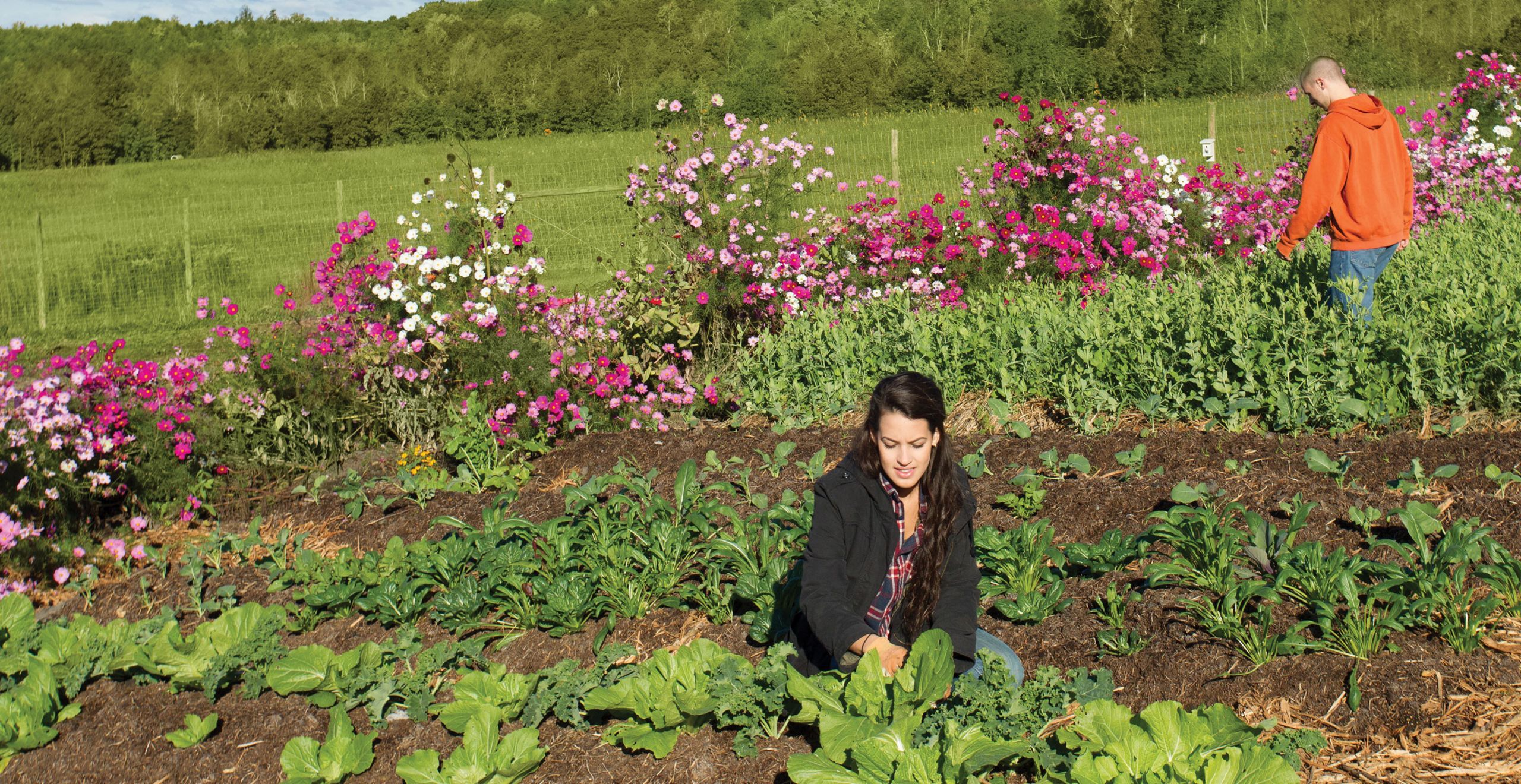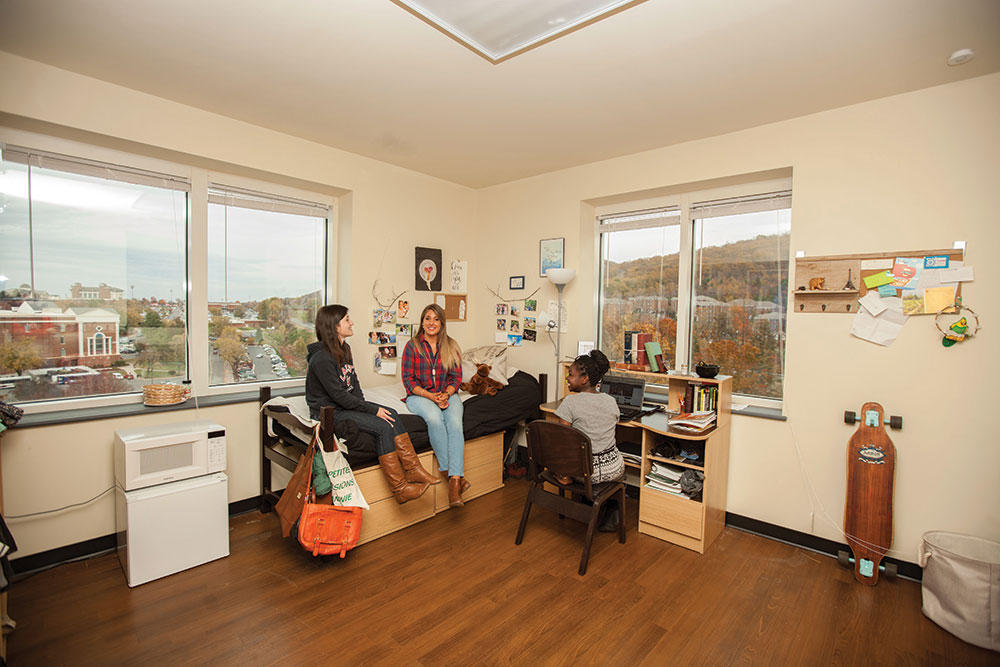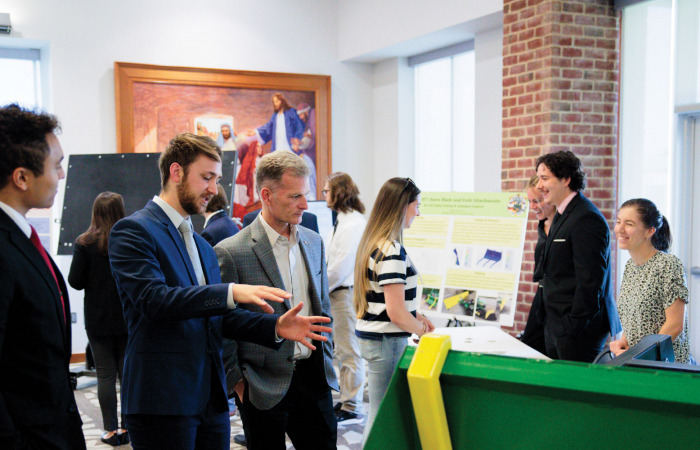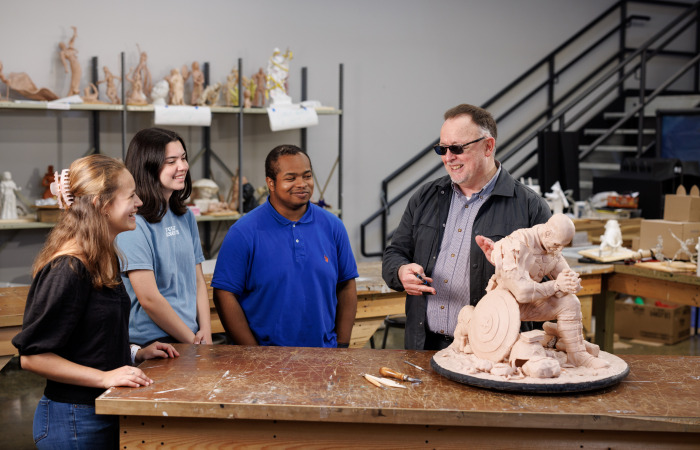“Every good and perfect gift comes from above…” James 1:17
Good stewardship of its resources is not only something taught at the university, but also something practiced across campus. From innovative construction designs intended to reduce energy consumption to preserving and caring for nature, Liberty’s Planning and Construction, Auxiliary Services, and Field Operations staff are committed to managing campus resources responsibly.
Charles Spence, senior vice president for Planning and Construction, said these efforts have been employed at the university for decades, before “going green” and “energy efficient” were buzzwords.
In the late 1990s, for example, Liberty invested in technology that significantly reduced energy consumption in light fixtures. Though the university had not yet reached financial stability, the purchase meant that each fixture used only 34 watts, saving about 13 watts per lamp per hour, across approximately 30,000 light fixtures, conserving energy costs. This commitment to efficiency continues today, with the latest technology allowing Liberty to burn even less energy; the current expenditure is now at about 25 watts per lamp per hour in the over 90,000 fixtures across campus. With lighting accounting for approximately 30-40 percent of our nation’s energy consumption, the savings — of both energy and money — are tremendous.
Bright Ideas
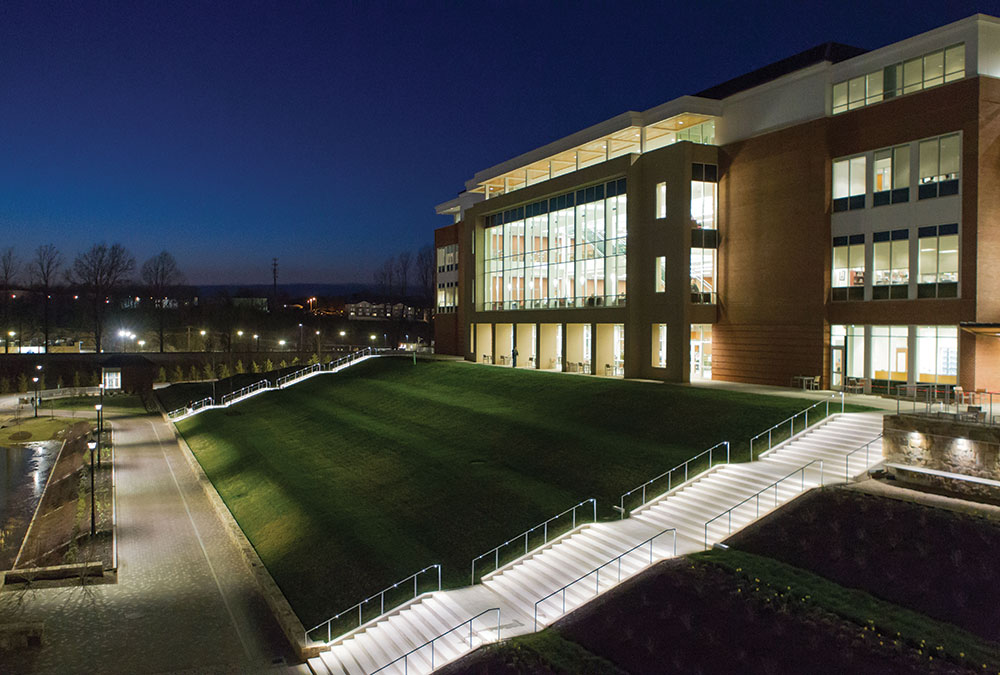
Buildings across Liberty University’s campus, including the Jerry Falwell Library, utilize a variety of methods to reduce energy consumption, including motion sensors and the latest in energy-efficient lighting.
When Liberty’s basketball arena, the Vines Center, was remodeled last summer, a new LED lighting system was installed. LED lights also line campus streets and parking lots, further reducing energy costs.
Many new buildings, including the LaHaye Multipurpose Center, utilize Lutron Electronics Company Inc.’s Daylight Harvesting technology, where lights automatically dim based on the amount of sunlight in a space. These systems are being installed in all newly constructed buildings across campus.
Liberty is also taking advantage of motion sensor technology, which automatically turns lights on when a space is occupied and turns them off when it is vacant. All of Williams Stadium, for example, uses these motion sensors. And for years, bathrooms have been outfitted with motion detectors for exhaust fans — saving not only energy costs, but maintenance and hardware resources, as well.
With the opening of its first high-rise residence hall, Residential Commons I, last fall, Liberty became the first college in Virginia — and one of only three in the country at the time — to use “vacancy detectors” in student dorm rooms. These sensors automatically switch the lights off if a room is unoccupied for a few minutes, although students can still manually turn the overhead lights on and off. In addition to the hallways and common areas in the new residence halls, other locations across campus, such as the remodeled portions of DeMoss Hall, are benefiting from this technology. Similar detectors are used in Residential Commons I to adjust heating or air conditioning to a median temperature when students leave the room, and then revert to their personal setting upon their return.
Certain areas on campus, such as the new residence halls and the library, utilize technology that automatically draws and retracts window blinds based on the sun’s position. This functionality improves the comfort of spaces when direct sunlight beats through the windows, threatening to wash out computer screens, overheat seats, and shine directly into people’s faces.
Liberty is more than just a leader in energy-saving methods; it is setting a standard. Liberty’s innovative use of lighting technologies was recently the subject of a Lutron case study designed to help other institutions learn how to be more environmentally responsible.
Energy-Conscious
One of the ways Liberty has been successful in keeping energy consumption to a minimum is by not assuming that what works well in one space will work in another. While motion sensors are appropriate in certain spaces, other areas, like the library, are better suited to a system based on time of day rather than occupancy.
Another way to lower energy consumption is by proactively utilizing certain construction methods. Planning for energy efficiency in the design and development phases of construction is an added benefit of the recent campus reconstruction. Buildings at Liberty are designed to be energy efficient from the outside in. This process includes creating a building “envelope” during construction, using insulation materials and air barriers to minimize outside elements penetrating the surface, which helps keep humidity low and limits heating and cooling costs.
Liberty also uses technology to be more efficient in its Heating, Ventilation, and Air Conditioning (HVAC) systems. Many of Liberty’s larger rooms have carbon dioxide detectors that adjust the amount of outside air funneled into a space, reducing the amount of energy needed to cool or heat it. When outside air is required, Liberty uses equipment with energy-recovery technology that tempers the incoming air with the outgoing air. This uses less energy to heat or cool the incoming air.
To accommodate several of the buildings on main campus, Liberty built its own central HVAC plant. The plant services the library, Residential Commons I, the Science Hall, and the Vines Center, and will service the forthcoming student center, Center for Music and the Worship Arts, Independence Tower, Athletic and Performance Center, and new residence hall.
A priority for water conservation is another example of Liberty’s commitment to energy savings. Most sinks on campus are motion activated, preventing users from leaving water running, and water-saving urinals in most men’s restrooms — even though they are more expensive — use one-eighth the water of the maximum code requirement. Showerheads that use less water are also utilized across campus.
Cleaner is Better
Liberty’s commitment to good stewardship is evidenced not only through its buildings, but also through its daily operations. The university helps reduce pollution by partnering with the Greater Lynchburg Transit Company (GLTC), the first transit system in Virginia to utilize electric-diesel hybrids. About half of the bus fleet that services Liberty, providing transportation across campus and to off-campus locations such as apartment complexes with heavy student populations, is comprised of these hybrids.
Another way Liberty reduces its environmental impact is by promoting recycling across campus. The Field Operations division spearheads a university-wide recycling effort. Containers across campus, as well as recycling centers outside of residence halls, help divert tons of reusable waste from landfills to recycling centers. Staff from Field Operations’ various departments — including custodial, grounds, and transportation — collect and properly redistribute recyclables. The Office of Student Leadership coordinates recycling in residence halls through resident assistants, who appoint a conservation advocate for each hall to encourage their peers in bringing recyclables to the various campus collection sites.
In 2014, Liberty recycled more than 270 tons of paper, 125 tons of metal, 7 tons of plastic, 28 tons of yard waste, 150 tons of wood waste, 4 tons of tires, 300 gallons of oil, 1.5 tons of batteries, 3 tons of electronics, and over 360 tons of reusable construction materials (brick, concrete, dirt, etc.).
Students are also doing their part to promote environmental responsibility across campus. The Students for Stewardship club raises awareness about energy-saving methods and recycling. The club works on several projects, including helping to collect recyclable materials after large sporting events.
Sodexo, Liberty’s dining services provider, focuses on reducing food waste. In 2007, the dining hall stopped using trays, which encouraged healthy portions and significantly reduced the amount of food being thrown out. Sodexo donates any leftover edible food to local organizations that feed the needy.
A Friend to Nature
In addition to conserving energy and resources, the university also utilizes and maintains its surrounding natural habitats.
Liberty is among the top 10 colleges in the country with the most land holdings — over 7,000 acres. In an effort to protect and responsibly manage this property, the university has been planting and cultivating several pine plantations, including 260 acres on Liberty Mountain.
“A majority of our land holdings are undeveloped, left in their natural state,” said Lee Beaumont, senior vice president for Auxiliary Services. “We have a forest management plan in place, in which we do managed cuttings followed by plantings.”
Beaumont explained that strategic cuttings help the ecosystem to thrive — younger trees, when growing healthily, absorb more carbon dioxide than mature trees.
Across Liberty’s beautiful mountain property, more than 50 miles of single- and double-track trails allow both students and the community to enjoy the natural terrain.
Fruits of the Earth
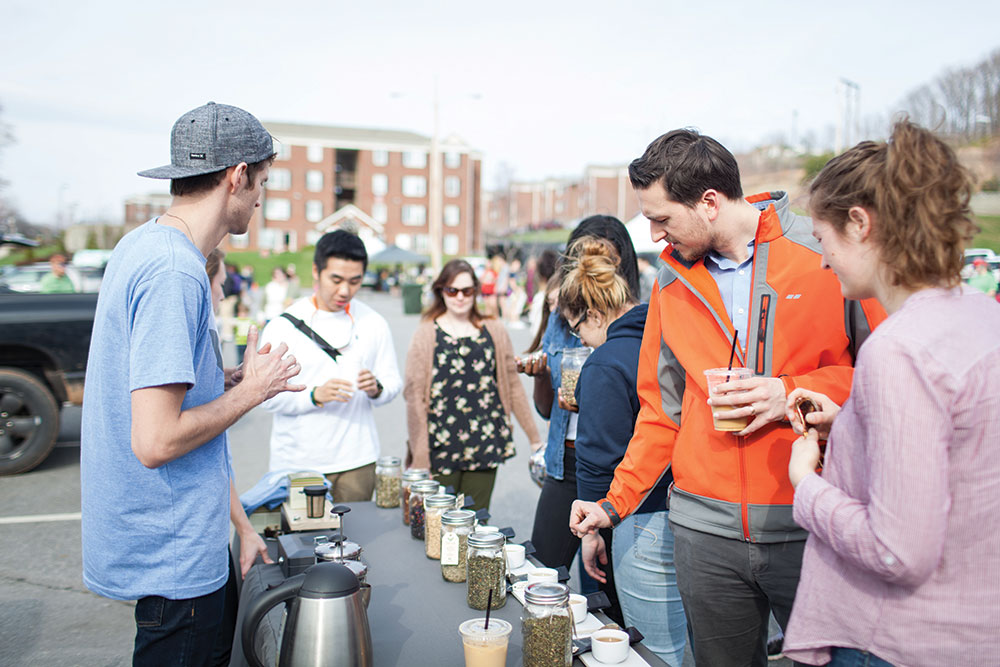
On Thursdays during the spring, summer, and fall, Liberty hosts a farmer’s market that is open to the public, bringing more than 40 community vendors to campus.
Another way that the university community benefits from its vast natural resources is through Liberty’s Morris Campus Garden. The project provides hands-on opportunities for students to learn how to foster soil health and grow different types of crops. Students see firsthand how small, responsible decisions make a big impact on the environment. The garden recently added an in-vessel composter that utilizes food waste from the dining hall, as well as manure from the Equestrian Center. A variety of seasonal crops grow in the garden, including kale, tomatoes, peppers, garlic, green beans, broccoli, sweet potatoes, carrots, beets, corn, squash, and diverse herbs. The garden donates most of its crops to local charities and the dining hall.
On Thursdays during the spring, summer, and fall, Liberty hosts a farmer’s market that is open to the public, bringing more than 40 community vendors to campus. It provides organic crops as well as opportunities to learn about the detriments of chemicals and pesticides.
Liberty’s commitment to not only teaching responsibility, but practicing it as well, is making a positive impact on the environment and on students as they learn to care for God’s creation.
